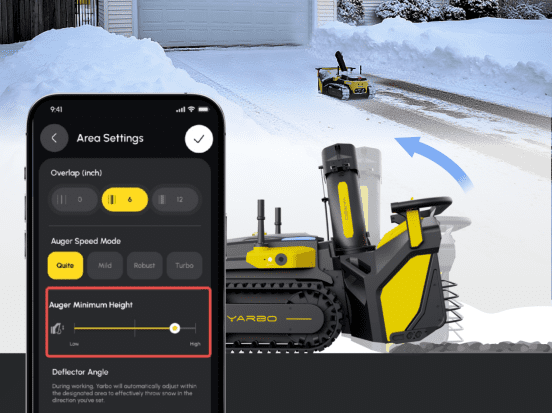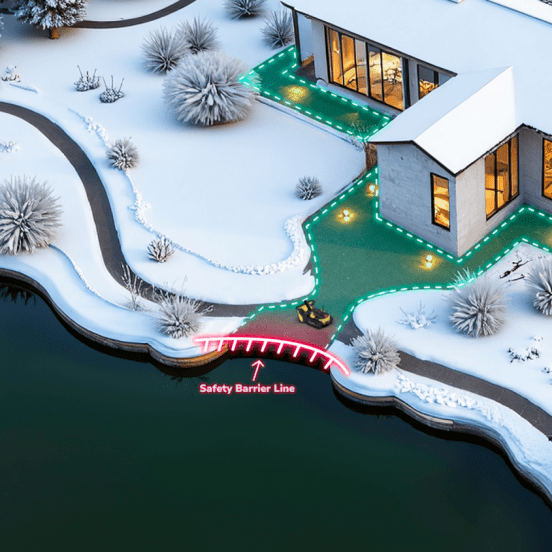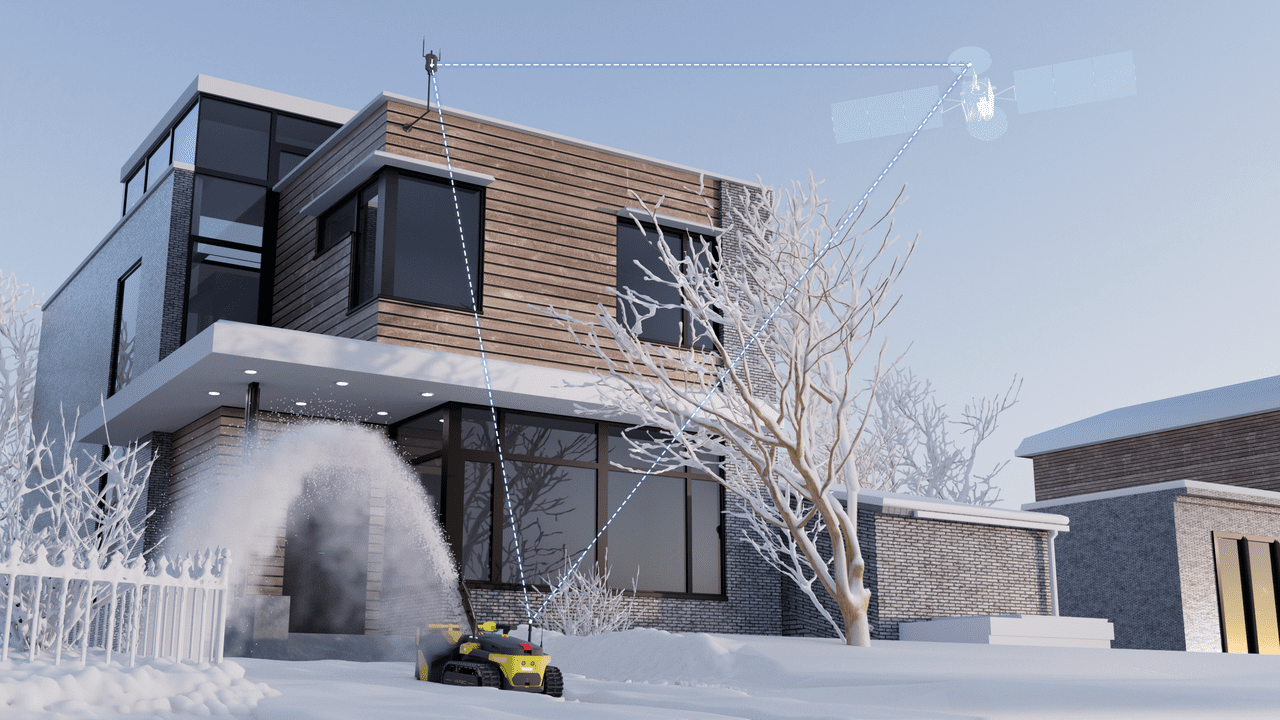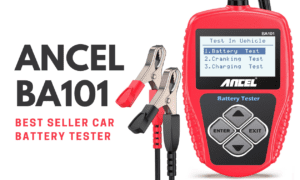Snow removal has always been a labor-intensive task, but with modern technology, the introduction of GPS snow blowers has revolutionized winter yard maintenance. By integrating advanced GPS navigation, Yarbo auto snow blower provides accurate path planning, mapping capabilities, and seamless app control, making snow removal more efficient, safer, and less physically demanding.
In this article, we will explore how GPS transforms snow blowers, examine mapping and app control features, and discuss the challenges of implementing this technology. We will also highlight real-world applications using Yarbo GPS snow blowers as an example.
Table of Contents:
- Introduction to Auto Snow Blower Technology
- How GPS Transforms Snow Blower Efficiency?
- Mapping Capabilities in Auto Snow Blowers
- App Control for Auto Snow Blowers
- Challenges in GPS Snow Blower Implementation
- Conclusion
- FAQs
Introduction to Auto Snow Blower Technology
GPS navigation in auto snow blowers combines satellite positioning, sensors, and advanced algorithms to automate snow clearing. Unlike traditional snow blowers that require manual operation, GPS-enabled units can navigate complex driveways, sidewalks, and large yards with minimal user input.
Key features include:
- Precise navigation using satellite signals.
- Path planning for optimized snow removal.
- Integration with mobile apps for monitoring and remote control.
- Mapping of the property for improved efficiency.
Yarbo’s GPS snow blowers are designed for large and complex yards, highlighting how automation can reduce both time and physical effort while ensuring complete snow coverage.
How GPS Transforms Snow Blower Efficiency?
Integrating GPS into snow blowers allows machines to plan efficient routes automatically. This reduces overlap, minimizes missed spots, and saves time.
Understanding Path Planning in Snow Blowers
Path planning involves creating an optimized route for the snow blower to follow. Using GPS data, the snow blower:
- Maps the area before starting.
- Determines the most efficient route.
- Adjusts dynamically to avoid obstacles like trees, fences, or vehicles.
Modern GPS snow blowers rely on algorithms that calculate the shortest and safest paths, ensuring comprehensive coverage even in irregularly shaped properties.
Benefits of GPS-Controlled Snow Removal
1) Time-saving: GPS reduces the need to manually guide the snow blower.
2) Precision: Automated path planning ensures no missed spots.
3) Reduced physical effort: Minimal manual intervention required.
4) Consistency: Maintains uniform snow clearing across multiple sessions.
5) Safety: Advanced sensors combined with GPS prevent collisions.
Mapping Capabilities in Auto Snow Blowers
Mapping is essential for autonomous operation, allowing the machine to understand terrain, boundaries, and potential obstacles. Auto snow blowers use a combination of sensors and RTK-GPS to build precise digital maps.
Yarbo’s system allows users to map their yard, manage 150+ zones, and refine maps via the mobile app, ensuring tailored snow removal. This allows for efficient route calculation across large properties, capable of clearing up to 6,000 sq ft of 1-inch snow per charge.
For properties with challenging layouts, Yarbo supports specialized clearing modes:
- Adaptable Routes: It handles large, steep, gravel, and circular driveways.
- Spiral Mode: Available for semicircular or circular driveways to efficiently clear the center area.

Yarbo Snow Blowing Zones After Mapping
Creating Accurate Digital Maps
Auto snow blowers use a combination of sensors and GPS to build precise digital maps. This includes:
- Property dimensions
- Obstructions such as trees and lampposts
- Areas requiring more frequent clearing
Yarbo snow blowers include mapping software that allows users to refine maps via the mobile app, ensuring higher accuracy and tailored snow removal.
Updating Maps for Seasonal Changes
Properties evolve with time, and so must snow blower maps. Features like dynamic mapping allow GPS snow blowers to:
- Adapt to new obstacles like parked vehicles.
- Adjust for snow depth or ice buildup.
- Recalculate paths when snow patterns change during a storm.
App Control for Auto Snow Blowers
Remote operation via a mobile app enhances convenience and control. Yarbo offers an intuitive app that integrates GPS navigation, path planning, and real-time monitoring.

Auger Height Adjustment Through Yarbo App
Features of Snow Blower Apps
- Scheduling: Set clearing times in advance.
- Remote start/stop: Operate the snow blower from your phone.
- Notifications: Receive alerts when the machine finishes or encounters an obstacle.
- Path visualization: Monitor the exact route in real time.
Safety and Alerts via App
GPS-enabled apps provide alerts for:
- Potential collisions
- Maintenance reminders
- Boundary breaches (geofencing)
- Unexpected obstacles detected by sensors

Yarbo Safety Features
Challenges in Auto Snow Blower Implementation
While GPS integration brings numerous advantages, challenges remain, particularly in severe winter conditions.
1) Signal and Positioning Issues: RTK signal stability can be problematic in areas with heavy tree cover, dense buildings, or adverse weather.
2) Traction and Visibility: Dense snow and icy conditions can interfere with sensors and onboard cameras, leading to skidding or reduced path accuracy.
Yarbo addresses these specific challenges with engineered solutions:
- PPVS Hybrid Navigation: The PPVS system integrates the Inertial Measurement Unit (IMU) and odometer, providing reliable positioning even when the RTK signal is unstable.
- Extreme Durability & Traction: The unit is built with a heavy, 200+ lb Q355 high-strength structural steel frame and rubber tracks to offer superior traction.
- Slope Mastery: Utilizing a Slope Pattern algorithm, Yarbo delivers stability and control, conquering icy slopes up to 36% (21°).
- Cold-Weather Endurance: Equipped with a low-temperature-resistant battery and motor system, it maintains strong performance in extreme cold, operating down to -25°C (-13°F).
Performance in Heavy Snow Conditions
- Dense snow can interfere with GPS signals and sensors.
- Traction issues may occur in icy conditions.
- Reduced visibility may affect onboard cameras and sensors.
Hardware and Software Integration Issues
- Sensors may require frequent calibration.
- Software updates must be compatible with app and device.
- GPS signal loss in certain terrains can impact path accuracy.
Case Study: Yarbo GPS Snow Blower
Yarbo has been at the forefront of autonomous yard maintenance. Its innovation is also driven by its modular multi-function design. Users invest in one intelligent platform—the Yarbo Core—and attach the tools they need: the snow blower, a lawn mower, or a leaf blower. This not only saves significant storage space but also provides high long-term value, as it is the last yard tool you’ll ever need to own.
Yarbo’s commitment to safety is evident through its eight protective mechanisms and the choice of a wireless auto-recharging system which eliminates the risk of electrical leakage or shock in cold weather
User Feedback and Performance Metrics
Users report:
- Up to 30% faster snow clearing
- Reduced physical fatigue
- High satisfaction with app-based monitoring and control
- Fewer missed spots compared to traditional snow blowers
Maintenance and Troubleshooting
Sensor and GPS Module Care
- Clean sensors regularly to avoid snow obstruction.
- Calibrate GPS modules periodically.
- Inspect for physical damage to ensure accuracy.
Software Updates and App Maintenance
- Regular firmware updates improve performance.
- App updates fix bugs and enhance usability.
- Ensure smartphone connectivity for uninterrupted operation.
Future Trends in GPS Snow Blowers
1) AI Integration: Predictive path planning and obstacle avoidance.
2) Enhanced Automation: Fully autonomous snow removal.
3) Smart Home Integration: Synchronization with home security and climate systems.
4) Energy Efficiency: Battery optimization for longer operation.
Conclusion
GPS navigation has transformed auto snow blowers into highly efficient, intelligent machines. By combining mapping, path planning, and app control, modern snow blowers like Yarbo’s models reduce effort, save time, and deliver consistent results. While challenges such as weather conditions and sensor maintenance exist, ongoing innovations promise even smarter and more reliable snow clearing solutions. The integration of GPS technology represents a significant leap forward in winter property management.
Shop Yarbo Auto Snow Blower during Halloween Sale now if you need one.
FAQs
Q1: Can GPS snow blowers operate in heavy snowstorms?
Yes, but performance may vary depending on snow density and depth. Advanced models like Yarbo handle moderate storms efficiently.
Q2: Do I need to create maps manually?
No, most GPS snow blowers, including Yarbo, create initial maps automatically and allow refinements via the app.
Q3: How accurate is GPS path planning?
Modern GPS snow blowers offer precision within a few centimeters, ensuring comprehensive coverage with minimal overlap.
Q4: Can I control the snow blower remotely?
Yes, app control enables start/stop operations, scheduling, and monitoring from a smartphone.
Q5: Are there safety risks with automated snow blowers?
Safety features include sensors, geofencing, and alerts to prevent collisions and detect obstacles.
Q6: How often should I update the software?
Software and app updates should be done as recommended by the manufacturer to maintain optimal performance.



































